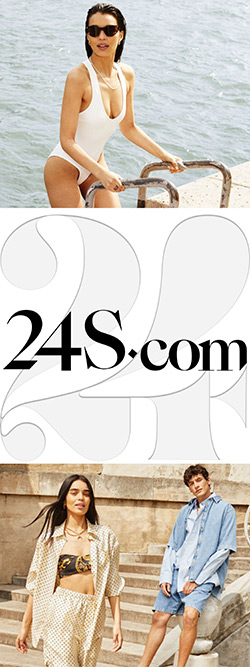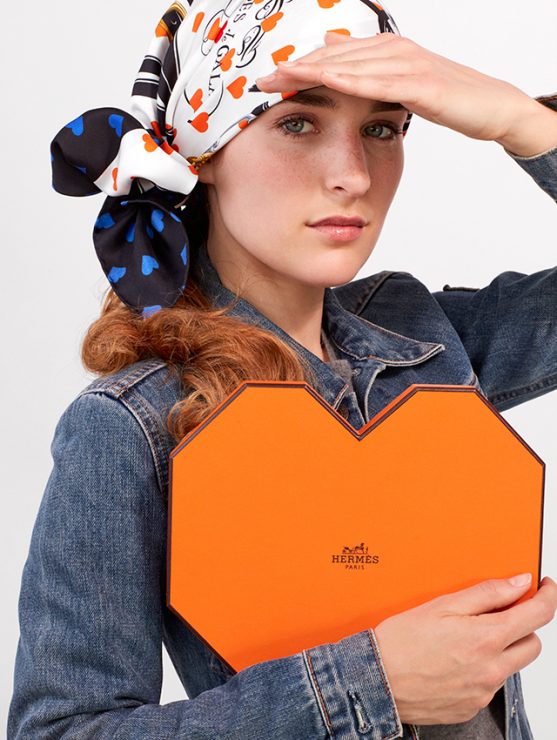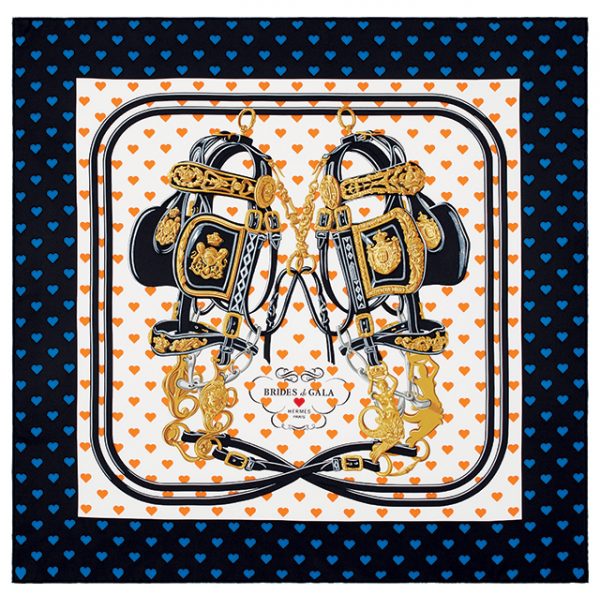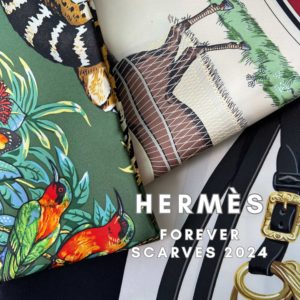
The forever scarves are heritage scarves, authentic and alive, that honor the original design in a unique and emblematic color. Neither reworked nor redesigned, they are presented in all their simplicity, true to the original drawing of the artist. This year there are four designs being honored.
This essential Hermès accessory complements any outfit. It can be worn many ways – around your neck, as a top, at the waist or as a headscarf!
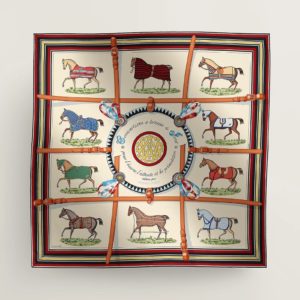
COUVERTURES ET TENUES DE JOUR Forever Scarf 90
Designed by Jacques Eudel (1974)
Crème / Rouge H / Bleu / Multicolore
This emblematic scarf is part of the history of the House, whose primary inspiration has always been the horse. It offers us a beautiful glimpse of equestrian coquetry. Elegantly framed by leather bridles, ten stepping horses are having a fitting as their schedule, their stable, their wait or their presentation requires a different and adapted accoutrement. A «French-style», «American-style» or «net-style» blanket, or a chain mail camel or camarillo, Jacques Eudel’s colorful brushstrokes are so realistic and precise that the most difficult task will be to choose one.
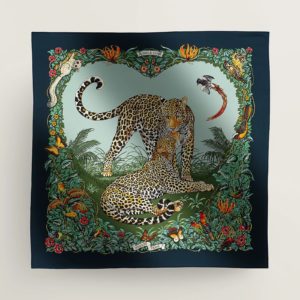
Design by Robert Dallet (2000)
Marine / Vert / Orange
Just like these two leopards, Robert Dallet had no equal when it came to magnifying – with a continuous concern for truth – such incomparable coats, the strength of their features and the power of these feline bodies. As a collaborator of the Natural Museum of Natural History in Paris and a staunch naturalist, his work is a vibrant and necessary tribute zo the wonders of the wild. Here, he illustrates a page of love that has become an emblematic scarf in the House’s heritage. At the heart of the jungle, the lovers observe each other, a courtship performed under the curious eye of parrots, butterflies and galagos surrounding them.
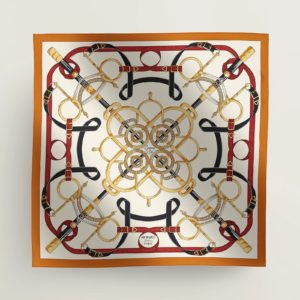
Designed by Henri d’Origny (1974)
Caramel / Crème / Or
At first glance, it is a skillfully orchestrated composition of leather and metal, loops and circles intertwined in complex harmony – a rosette in the form of a scarf. But as the eye focuses it discerns each of the elements that give this movement its rhythm in a repetition that is as soothing as it is intriguing. An urge draws us to follow this mysterious network with no beginning and no end. Spurs, stirrups, rein hardware and riding crops with three rings of gold: the curves and straight lines of horse tack used by Cadre Noir master riders of France’s prestigious Saumur riding school established in the 19th century.
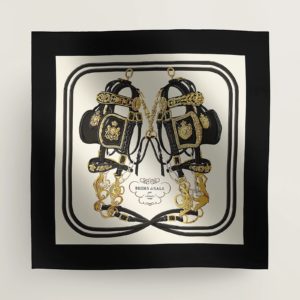
BRIDES DE GALA Forever Scarf 90
Designed by Hugo Grygkar (1957)
Noir / Crème / Gold
In 1957, Robert Dumas worked with Hugo Grygkar. He placed two bridles face to face on the floor, and immediately it became clear that the composition was perfect, a scarf with unparalleled simplicity came to life. This was followed by the talent of a precise and subtle hand, which is so dear to the House. This design reflects the first love of a House of saddlers, its attraction to the beautiful, useful, and durable, as well as the enduring legacy of a title whose sounds evoke, as Jean-Louis Dumas once noted, «dazzling ceremonial garments». The interlaced harnesses feature pieces from the Émile Hermès collection. Objects sometimes have a truly wonderful destiny.
LoL, Sandra
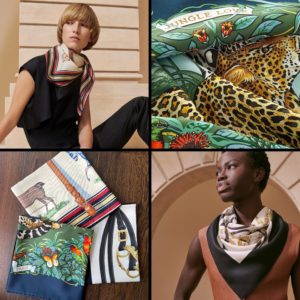
Photos: © Sandra Bauknecht and © Hermès
DISCLOSURE: We may earn commission from links on this page, but I only recommend products I love. Promise!


